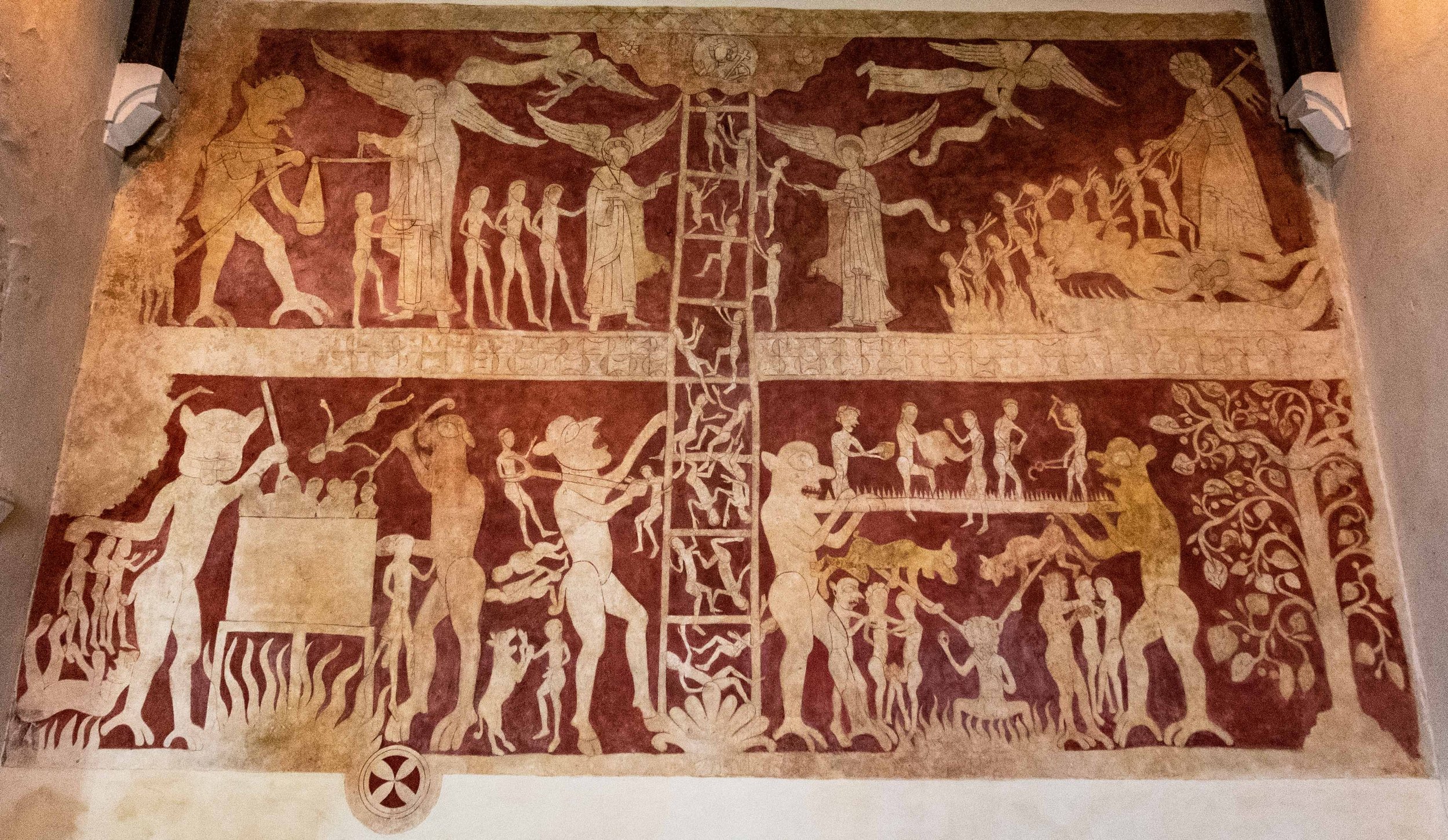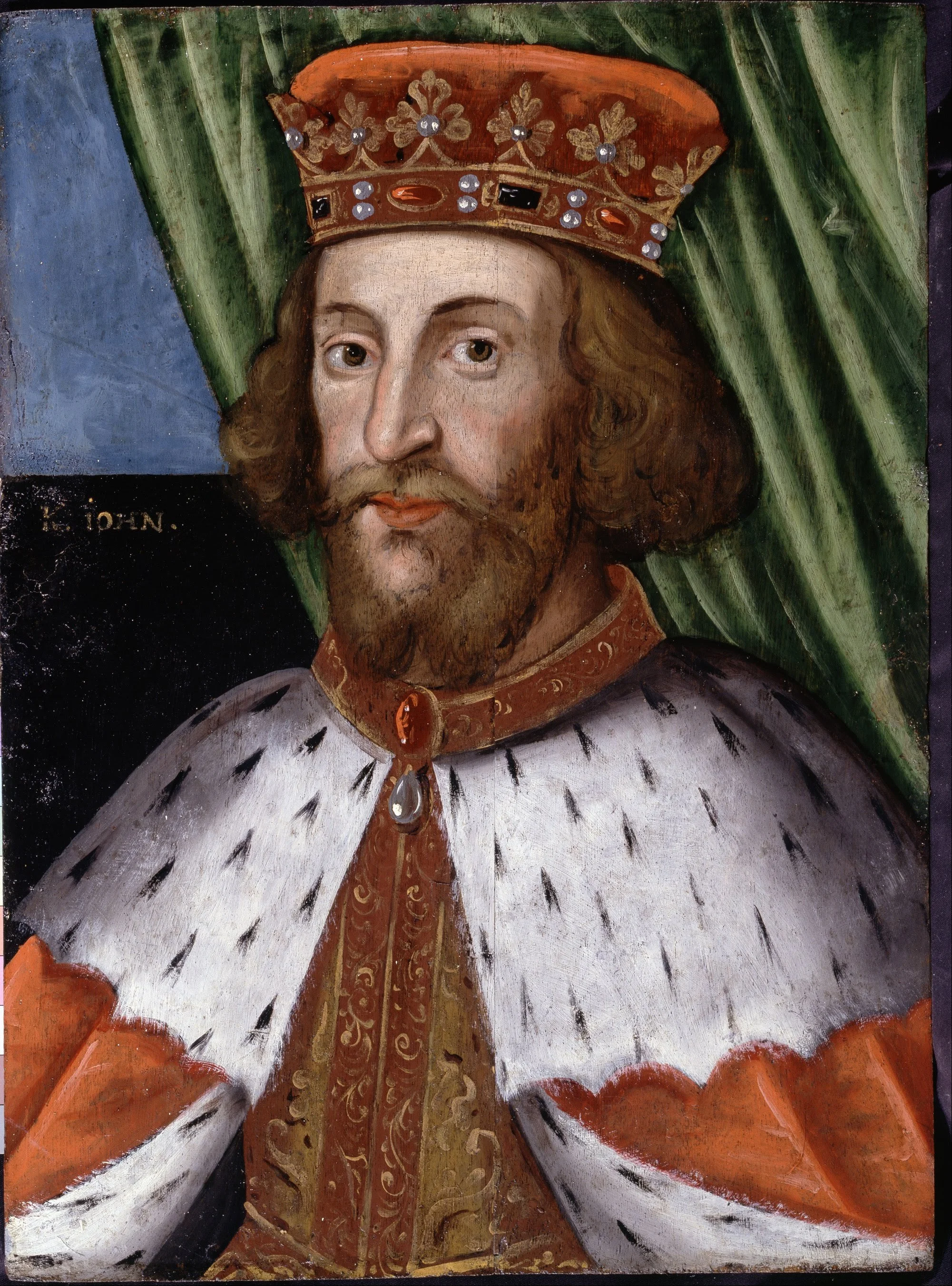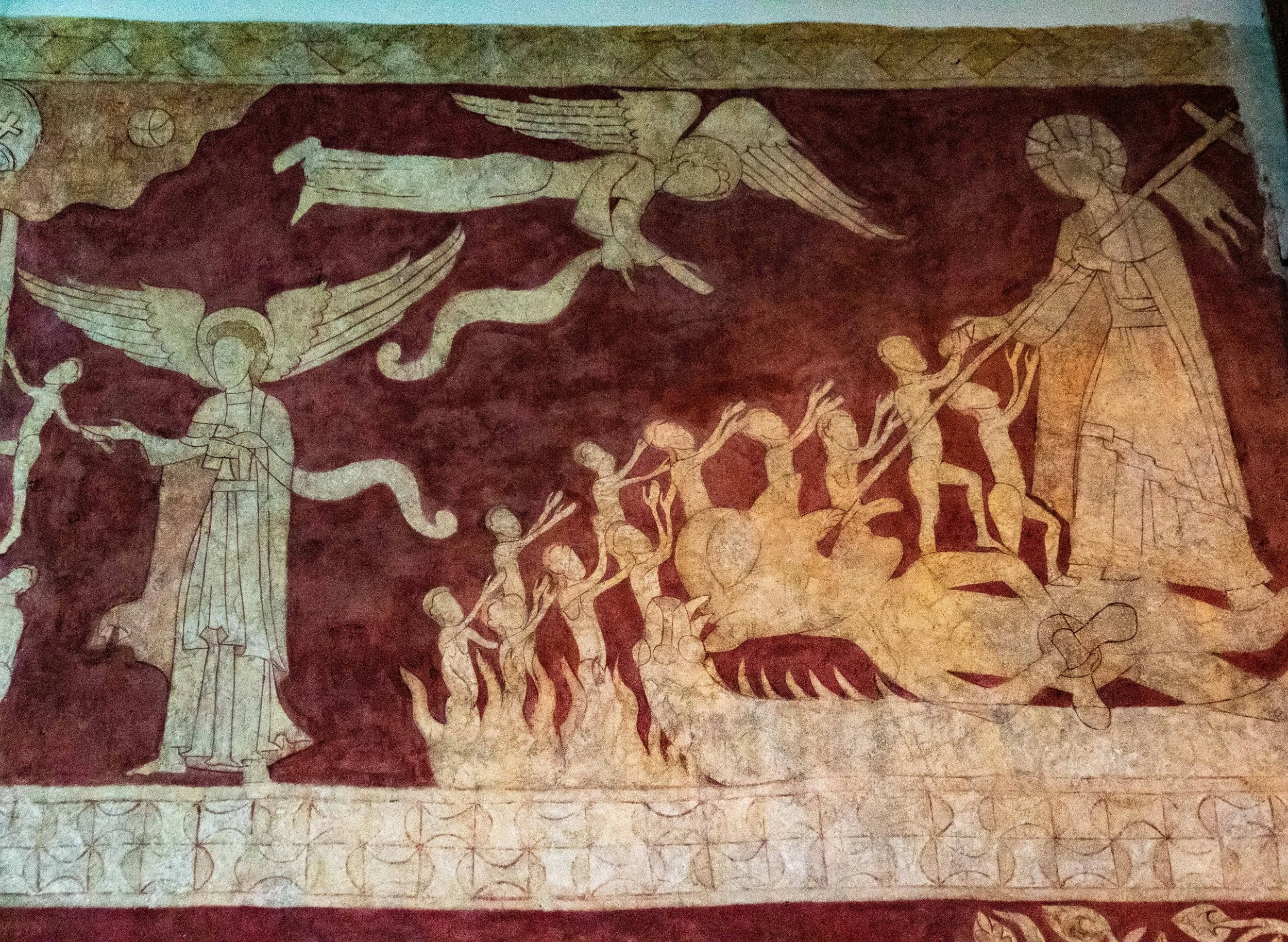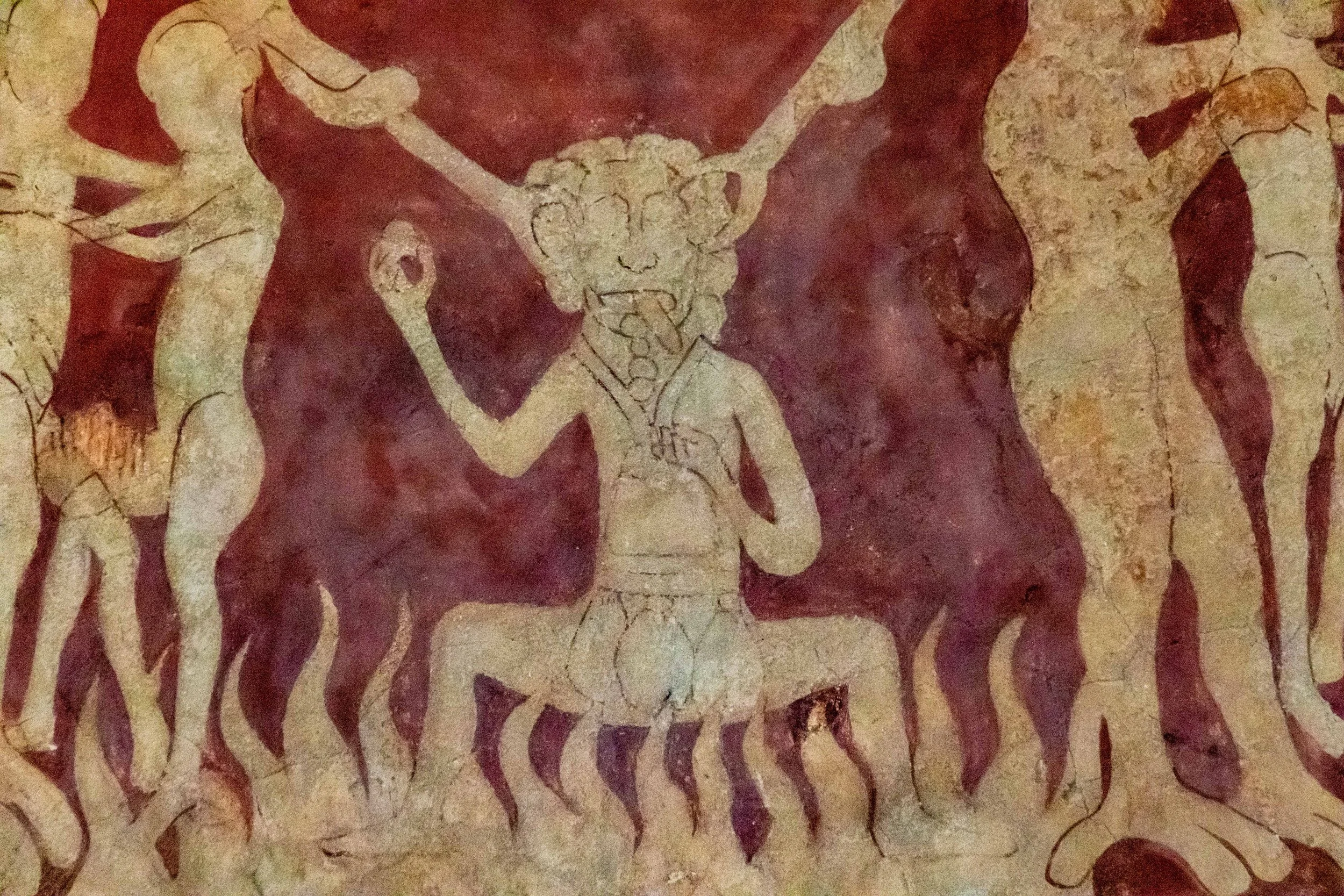Chaldon "Doom Painting" or "Purgatorial ladder" , probably the oldest in the UK.
/What is so special about this painting?
Situated in St Peter and St Paul’s Church Chaldon, it is possibly the oldest Doom painting in the UK, painted sometime around 1200 AD. It is unique, there is nothing to compare it with. Some people have suggested that it is part of the original mural but no-one has found any evidence to support this theory and looking around with my amateur eye, I couldn’t see anything that could be interpreted as being even a small bump in the white paintwork that could be concealing a fragment of another painting. The painting is believed to have been produced by an unnamed travelling monk who went from church to church. The painting is over 17 feet wide and 11 feet high. Only red and yellow ochre paints were used in the painting which again, makes it unusual. It is said to have been whitewashed when Cromwell and the puritans were in power and rediscovered in 1869. Protestants and their more extreme cousins, Puritans, believed this was a “Popish” distraction and should be whitewashed over. They did not believe in “Purgatory”, along with bishops and the Pope, Purgatory was not mentioned in the Bible. The Reformation brought about the idea that mural paintings, stained glass windows, priests in colourful garments and statues in church, were distractions and that people should simply sit in church and listen to the readings from the Bible.
The painting shows the Biblical Day of Judgement with, in the middle, the “Ladder of Salvation” where souls of the “good” can climb up to heaven having to go through “Purgatory” where they are judged and then allowed into heaven. On the other hand “sinners” go from Purgatory back down to Hell where they stay, suffering for eternity. From this it is often given the title of a “Purgatorial Ladder” or “ Ladder of Souls”. The bottom half of the painting is devoted to scenes from hell and focuses on the “Seven Deadly Sins” which will be explained in the commentary below.
Courtesy of the British Library
Why were they so religious in medieval times?
In the medieval period most people could not read or write but they were all religious attending a church service every Sunday. Mankind has always asked questions and wanted answers. Just like today, people asked where does mankind come from and why did people die? Teachings from the Bible gave them answers. Science did provide some answers that seemed logical, if not correct, but God’s wishes also provided plenty of solutions. People could sleep easily knowing the answers they were given by priests and bishops. They also knew that their lives on earth would be quite brief and so would be worried about what came after death. Again, the teachings in the Bible gave them answers; good people, “non sinners” would be judged and go to heaven whilst bad people “sinners” would be judged and go to hell. The Chaldon”Doom Painting” put this in pictorial form.
Seeing this picture on a regular basis every sunday of their lives would convince them about the existence of heaven and hell. As a young child, seeing this would have a profound effect on them. The devils in the painting look scary to adults today let alone children in those days. This early impression would be reinforced on a weekly basis and so was deeply set in their minds as adults.
Why was the Chaldon Doom Painting created?
The answer to this question was to reinforce biblical teachings and keep everybody in society to behaving according to the Ten Commandments in the Bible and to avoid committing the “Seven Deadly Sins”. Who would risk a good life in heaven for some “sin” which would result in torture in hell forever? Unlike a prison sentence, occupying hell was for eternity and, of course, all the torture would never end when the person dies because they were already dead! To get people to take notice, the torture illustrated in the doom paintings would be extreme. Being chained to a wall in a dungeon with rats as companions would seem rather comfortable compared to what they saw in the doom paintings. Listening to their parish priest would teach the people attending the church the path to follow to ensure eternal bliss in heaven.
The painting also helped to enhance the power of religion and of the religious hierarchy as well as control the people and keep them in their place.
Wki Commons in the public domain, from the Dulwich Picture Gallery
Why was the Doom painting important in the reign of King John?
Historians have dated the painting to around 1200 AD, which was at the start of the reign of one of the more notorious English kings, King John pictured above (1199-1216 AD). In 1206 John fell out with Pope Innocent III about who had the right to appoint the Archbishop of Canterbury, the head of the Church in England. King John wanted John de Grey, his trusted Bishop of Norwich , whereas the Pope wanted Stephen Langton. John’s response was to banish Stephen Langton, ie he would not be allowed to come to England to take up the post. When negotiations failed to solve the matter, Pope Innocent Issued an “Interdict” on England which meant that no church services could take place except for Baptisms and absolutions for dying people. This meant that no marriages, funerals, or mass could take place and the dead were to be buried in unconsecrated land. This, of course, was only in theory because the ruling was gradually circumvented with unofficial ceremonies taking place. Priests weren’t meant to attend or lead any of these services but in a local setting, “behind the Pope’s back”, they carried out their normal duties. The Interdict ended with King John backing down in 1214. However, we do not know how the ordinary people felt about this religious turmoil. Initially, at least, when the “Interdict” began, people must have thought deeply about the message of the Doom painting and probably worried if they were doomed to hell. Not attending mass or doing it without the Pope’s permission must have made them fear the worse. Not burying their relatives in consecrated ground may have given them nightmares!
What can be seen in the doom painting or “purgatorial ladder”?
The top left quadrant.
The left side the top left quadrant of the painting shows St Michael weighing people’s souls in Purgatory (below is a close up of the scene) If their good life was full of good deeds and their goodness outweighed their sins, they would go to heaven for eternity. If their sins outweighed their good deed and beliefs, the devil would take them off to Hell, a place with no escape as the falling souls on the bottom half of the ladder to heaven show. The Devil on the left side can be seen pushing the sinning side of the scales downwards thus making it harder for anyone to get to heaven. He also has a rope in his right hand dragging souls to hell.
The three souls to the right of St Michael, are destined for heaven and could be ordinary people. On the other hand, some experts have said they are the “Three Marys” who were present at the crucifixion and at the resurrection of Jesus on easter Sunday. Unfortunately, Mary was such a common female Jewish name that experts disagree as to which three it was. At the crucifixion it was Mary, the mother of Jesus, Mary Magdalene and Mary of Clopas, whereas those who went to the empty tomb were Mary Magdalene, Mary of Clopas and Mary Salome. Whichever three Marys it was, they were all devout followers of Jesus and key players in his life and so were definitely going to heaven. In the area above them, another soul is being flown to heaven by an angel.
Above the ladder is Jesus again, this time blessing those arriving in heaven.
The top right quadrant.
The scene on the right is known as the “Harrowing of Hell”. The devil has his hands tied and he is laying on a horrible worm like creature that pecks him in the head with beak similar to that of a cockerel. Added to that, Jesus on the right is driving a banner staff into the devil’s mouth. To the left of the creature souls are rising out of the flames of hell and are moving towards Jesus in a humble, begging and thankful pose. On the left an angel is encouraging souls to keep climbing up the ladder to get to heaven.
The bottom left quadrant.
I have labelled parts of this quadrant to show what is thought to depict 4 of the deadly sins.
In the bottom left-hand quadrant is the letter S for sloth. Three people, particularly small compared to the giant, gruesome devil above them, are slowly strolling along or dawdling, whilst another horrible creature is laying on its back and is grabbing hold of them before gnawing their feet.
G is showing gluttony. Here a man is being a glutton by consuming too much wine. In medieval times gluttony could be about too much to drink and not just as we think about it, too much food consumed. In his right hand is a vessel containing wine or possibly beer. It has been suggested that he sold his cloak or badge of office to purchase the wine.
P shows pride. Experts suggest that a wolf has grasped a woman’s hand and looking at the ring that she is proudly displaying on her finger. An alternative interpretation is that the wolf is gnawing her hand because she had pride in her beautiful hands or that she fed her pets too well in life while ignoring the starving.
A shows anger. Here two people are falling down and arguing over the possession of a hunting horn.
Elsewhere in the quadrant is a boiling hot cauldron full of people, possibly murderers. They are being cooked for their sins and are prevented from escaping by two devils who are using prongs to keep them in the pot. What a horrible torture this is! On the right of the quadrant are people falling down to hell having tried to get out of it. There is also another huge devil who is plucking people off the ladder, ensuring that they suffer for their sins!
Bottom right quadrant
It is easy to see how people could get nightmares from looking at this on a regular basis. There is a lot of extremely painful torture going on here with three more of the seven deadly sins being depicted here.
L illustrates lust. A man and woman are having a cuddle with a devil grabbing hold of the man’s shoulder and preventing them from going on to consummate their relationship.
AV shows avarice. A closeup of the scene is below. Here we have a man whose legs are astride a fire and is having his genitalia burned. The man has a sack of money tied around his neck and three more bags hanging from his waist. Coins are pouring out of his mouth and experts have suggested that he has to count them. To ensure that he does not escape, two devils are holding him down with prongs or forks. Who could have thought up this horrific scene? See below for a closer look.
E shows a scene involving envy. Here one soul is grasping another, younger soul, in envy of his youth.
Above these three deadly sins are two devils holding a bridge with numerous vicious and razor sharp spikes. Souls of dishonest tradesmen have to walk across the bridge performing impossible tasks. This features a potter who is attempting to make a pot without a potter’s wheel, a woman trying to spin some yarn but without a spindle, a mason without his tools and on the right side of the bridge, is a blacksmith attempting to make an iron horseshoe without an anvil. There is also, apparently, a cheating milkman with a bowl full of milk who was accused of selling short measures.
TK. On the right is the Tree of Knowledge of Good and Evil. When Adam ate an apple from the tree, ignoring God’s will, mankind gained knowledge of evil as well as good. Before that, evil and good were separate and evil was only a minor concern. Both Adam and Eve lived a life of innocence in paradise. However, God now banished them from the Garden of Eden, or paradise, and they had to live in a “sinful world”.
SP is the serpent who some interpret as the devil in disguise. In the story of Adam and Eve, it was the serpent who tempted Eve to eat the forbidden fruit and she in turn tempted Adam to eat it, knowing that it was against God’s will.
On the day we went to this beautiful and peaceful little church, a team of volunteers were tidying the grounds.
Essential information
Getting to St Peter and St Paul’s Church, Chaldon.
As far as we know, the only way to get to St Peter and St Paul’s Church, Chaldon is by car using Sat Nav. Its address is St Peter and St Paul’s Church, Church Lane, Chaldon, Caterham Surrey, CR3. It is not far from the M25 and is set in beautiful countryside.
Opening times;
Mon-Sun 10 am to 3pm. There are services on a Thursday and a Sunday at 10.30. am.






















Buckler’s Hard has three historical phases; a proposed sugar town that failed, a shipbuilding yard initially providing ships for the Royal navy and a base for various things linked to World War Two but especially D Day. Walking from the car park you suddenly come across this beautiful, unmodernised, Georgian street. One side of the road contains an amazing museum of all the activities that have taken place over the last 300 years. It includes some intricate models of sailing ship building here, loads of artefacts and full size waxwork models illustrating life in the late 18th and early 19th centuries.